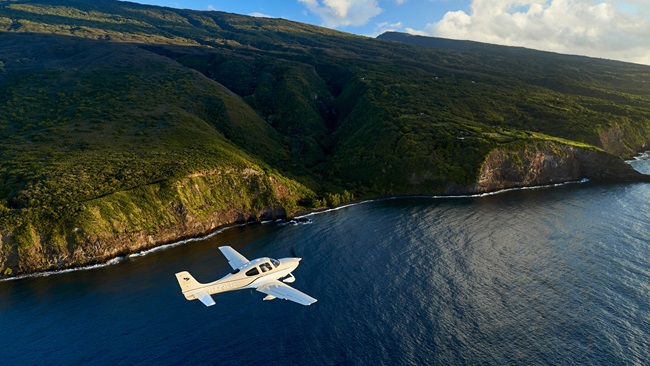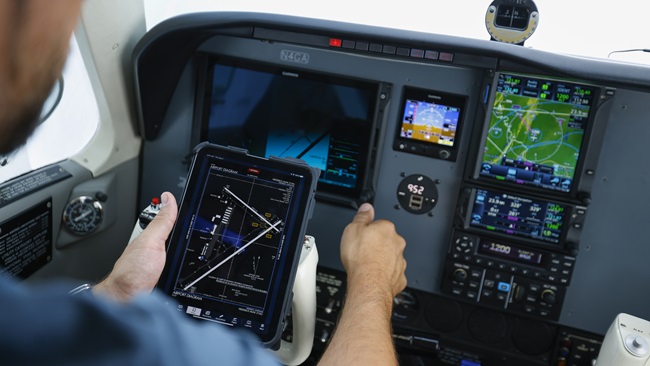Wildfire ahead? Check for a TFR
A general aviation pilot on a VFR cross-country over a remote area observes a plume of smoke along the route, indicating that a wildfire is burning somewhere in the wooded ridges up ahead.

Even if the pilot decides the fire’s effect on visibility does not require a course change, there may be other factors to consider. One is the possibility that a temporary flight restriction (TFR) is in effect to provide a safe environment for aerial firefighting operations.
Even if you checked TFRs immediately before departure, a new TFR, or the reconfiguration of an existing TFR that had no previous impact on your route, may now cross your course.
Consider, for example, that on a single summer night in southwest Oregon, 50 lightning strikes resulted in 30 large fires. And changing winds or a passing front can quickly blow a small fire into a conflagration.
Not every wildfire results in a TFR being activated, however, even if some aerial firefighting aircraft are called in to extinguish the blaze. Helicopters using buckets at low altitude might not warrant a TFR’s activation, said Bureau of Land Management Acting National Airspace Program Manager Kurt Kleiner in a phone interview from the agency’s Oregon-Washington state office in Portland, Oregon.
As of Sept. 14, Kleiner, a flight instructor and AOPA member, was looking forward to a forecast of rainy weather in the Northwest that could help suppress about half the fires for which TFRs were active in the area, as the fire season began to wind down.
At the season’s peak on Sept. 4, there were 59 fire TFRs active, he said.
Not all fires that occur in sparsely inhabited terrain are truly remote: Shortly before a TFR was to go active Aug. 23 in Reno, Nevada, for VIP travel, lightning set off five fires in the Reno-Carson City area.
The result of some hurried interagency coordination was a TFR for the fires being embedded in the VIP TFR, with firefighting aircraft flying missions inside the restricted airspace.
As that example demonstrates, coordinating TFRs can mean much more than just processing a request to have one where it’s needed, which Kleiner documents in a presentation he has designed on lessons and challenges learned during the 2017 firefighting season.
During the Eagle Creek fire in Oregon’s Columbia Gorge on Sept. 5 near Portland International Airport and Portland-Troutdale Airport, negotiations between officials resulted in the FAA’s initial TFR outline being changed so that TFR ceilings differed in eastern and western affected areas to accommodate flight operations.
When the wind changed Sept. 8, making Portland International’s Runway 28 the active runway instead of its reciprocal, the western edge of the TFR was moved three miles to the east.
Several days later, the active hours of the TFR were changed “to accommodate requests from GA,” notes Kleiner’s presentation.
That change indicated another element of flexibility that can affect a TFR’s specific procedures. “Not all Fire TFRs are established for 24 hours a day,” he said. “We often make them valid for certain block hours of time, such as 0800 to 2100 local so that GA users of the airspace have free access to fly in the area in the early morning hours.”
Also, tactical firefighting operations—that is, tanker and helicopter bucket drops—are not authorized or conducted beyond 30 minutes after sunset, except in southern California where night operations using night vision goggles can occur, he said.
In August, AOPA reported on a technical glitch experienced by the FAA’s graphical TFR website that resulted in erroneous displays and TFR omissions. The problem was of significant concern to firefighting coordinators, who for a time tried without success to press for a solution.
“Numerous phone calls and email requests by several Airspace Coordinators did not resolve the problem. Issue was resolved immediately when AOPA was made aware and became involved,” Kleiner notes.
Recent pilot incursions into other types of TFRs, in other regions, have focused attention on the need to better educate pilots about airspace restrictions, Kleiner gives the aviation community good marks for staying out of the way of aerial firefighting operations.
“My sense is the general aviation population gets it,” he said. “We have not had that many issues with GA—a lot fewer than one might think.”
When it comes to drones, however, there is more work to be done: “At last count there were 27 UAS incursions in fire TFRs since last spring, and probably more that were not reported.”
In some cases, he said, law enforcement officials on the ground received the reports of the drones flying in restricted airspace, and were able to confront the operators.
Education will clearly play a role in reducing the risks. But Kleiner said he is “waiting for technology to catch up,” perhaps with sense-and-avoid systems, or drones being equipped to be detectable by collision avoidance systems or Automatic Dependent Surveillance-Broadcast in manned aircraft.
“I am concerned that eventually a UAS is going to take down one of our helicopters or air tankers, and that’s going to be a real disaster,” he said.
Pilots should note that TFR incursions are not the only source of collision hazards where fires are concerned.
Kleiner points out that a TFR cannot be ordered for a “prescribed fire.” If aerial firefighters are participating in an exercise involving such a fire, a GA pilot flying nearby would still be well advised to remain at a safe distance from the scene of the action.



